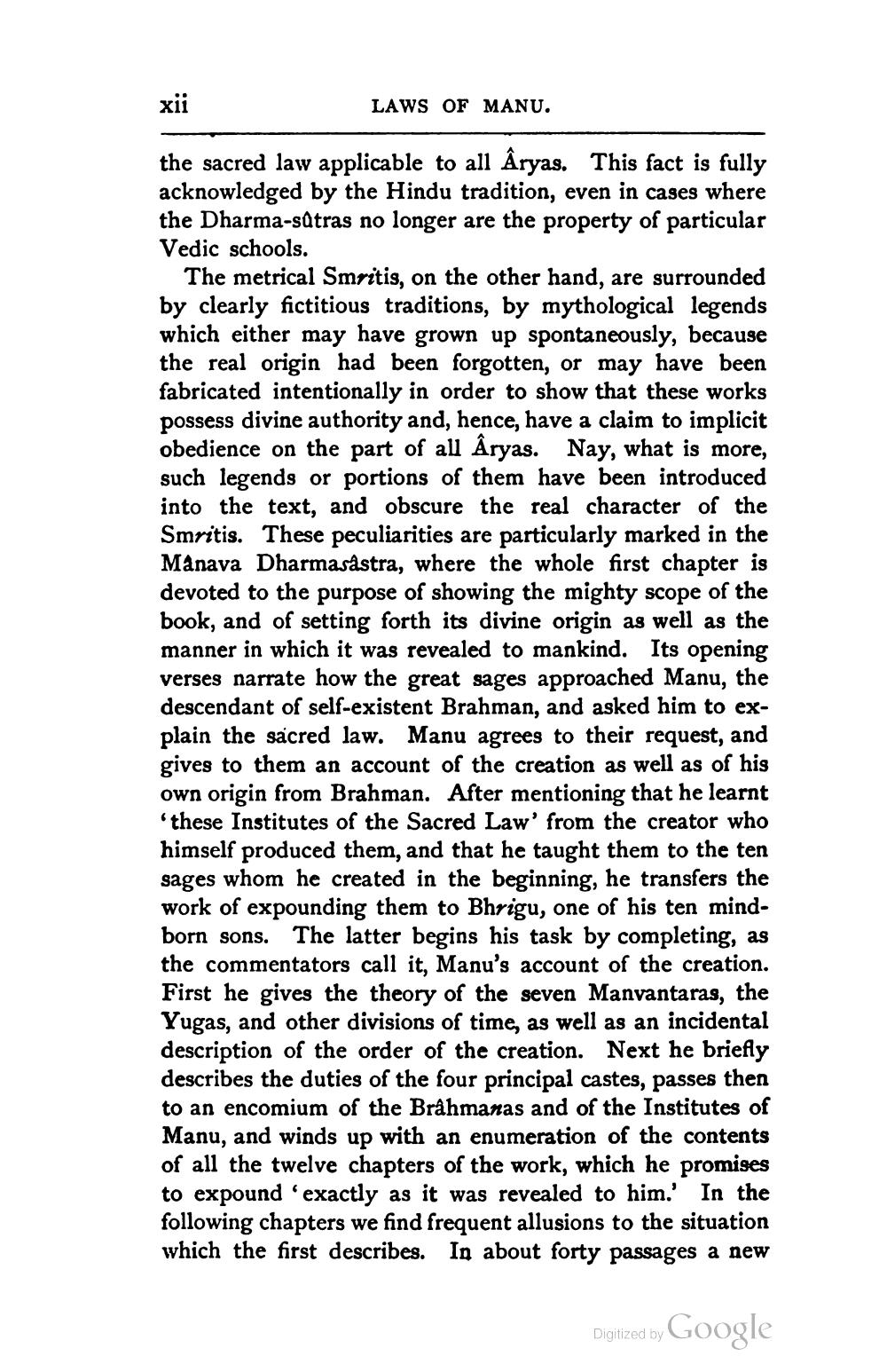________________
xii
LAWS OF MANU.
the sacred law applicable to all Âryas. This fact is fully acknowledged by the Hindu tradition, even in cases where the Dharma-sätras no longer are the property of particular Vedic schools.
The metrical Smritis, on the other hand, are surrounded by clearly fictitious traditions, by mythological legends which either may have grown up spontaneously, because the real origin had been forgotten, or may have been fabricated intentionally in order to show that these works possess divine authority and, hence, have a claim to implicit obedience on the part of all Âryas. Nay, what is more, such legends or portions of them have been introduced into the text, and obscure the real character of the Smritis. These peculiarities are particularly marked in the Manava Dharmasastra, where the whole first chapter is devoted to the purpose of showing the mighty scope of the book, and of setting forth its divine origin as well as the manner in which it was revealed to mankind. Its opening verses narrate how the great sages approached Manu, the descendant of self-existent Brahman, and asked him to explain the sacred law. Manu agrees to their request, and gives to them an account of the creation as well as of his own origin from Brahman. After mentioning that he learnt
these Institutes of the Sacred Law' from the creator who himself produced them, and that he taught them to the ten sages whom he created in the beginning, he transfers the work of expounding them to Bhrigu, one of his ten mindborn sons. The latter begins his task by completing, as the commentators call it, Manu's account of the creation. First he gives the theory of the seven Manvantaras, the Yugas, and other divisions of time, as well as an incidental description of the order of the creation. Next he briefly describes the duties of the four principal castes, passes then to an encomium of the Brahmanas and of the Institutes of Manu, and winds up with an enumeration of the contents of all the twelve chapters of the work, which he promises to expound 'exactly as it was revealed to him.' In the following chapters we find frequent allusions to the situation which the first describes. In about forty passages a new
Digitized by Google




